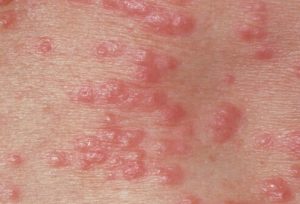Back to: HOME ECONOMICS JSS1
Welcome to class!
In today’s class, we will be talking about the skin. Enjoy the class!
The Skin

The skin is the largest organ of the body, with a total area of about 20 square feet. The skin protects us from microbes and the elements help regulate body temperature and permits the sensations of touch, heat, and cold.
The skin has two parts:
- The epidermis: the outermost layer of skin, provides a waterproof barrier and creates our skin tone.
- The dermis: beneath the epidermis, contains tough connective tissue, hair follicles, and sweat glands.

skin
(Note: The skin’s colour is created by special cells called melanocytes.)
Types of skin
- Oily skin:
This is the type of skin that has enough natural moisture and oil substance that helps to lubricate the hair and the skin.
- Dry skin:
This is common among the aged and those that cannot care for their body because it always looks rough and tightly on the body.
- Normal skin:
This does not have any problems because the skin produces lesser oil; the sebaceous glands are less inactive.
Skin conditions
- Rash: Nearly any change in the skin’s appearance can be called a rash. Most rashes are from simple skin irritation; others result from medical conditions.

rash - Dermatitis: A general term for inflammation of the skin. Atopic dermatitis (a type of eczema) is the most common form.
- Eczema: Skin inflammation (dermatitis) causing an itchy rash. Most often, it’s due to an overactive immune system.
- psoriasis: An autoimmune condition that can cause a variety of skin rashes. Silver, scaly plaques on the skin are the most common form.
- Dandruff: A scaly condition of the scalp may be caused by seborrheic dermatitis, psoriasis, or eczema.
- Acne: The most common skin condition, acne affects over 85% of people at some time in life.
- Cellulitis: Inflammation of the dermis and subcutaneous tissues, usually due to an infection. A red, warm, often painful skin rash generally results.
- Skin abscess (boil or furuncle): A localized skin infection creates a collection of pus under the skin. Some abscesses must be opened and drained by a doctor to be cured.
- Actinic keratosis: A crusty or scaly bump that forms on sun-exposed skin. Actinic keratosis can sometimes progress to cancer.
- Herpes: The herpes viruses HSV-1 and HSV-2 can cause periodic blisters or skin irritation around the lips or the genitals.
- Hives: Raised, red, itchy patches on the skin that arise suddenly. Hives usually result from an allergic reaction.

hives - Tinea Versicolor: A benign fungal skin infection creates pale areas of low pigmentation on the skin.
- Shingles (herpes zoster): Caused by the chickenpox virus, the shingle is a painful rash on one side of the body. A new adult vaccine can prevent shingles in most people.
- Scabies: Tiny mites that burrow into the skin cause scabies. An intensely itchy rash in the webs of fingers, wrists, elbows, and buttocks is typical of scabies.

scabies - Ringworm: A fungal skin infection (also called tinea). The characteristic rings it creates are not due to worms.
In our next class, we will be talking about Good Posture. We hope you enjoyed the class.
Should you have any further question, feel free to ask in the comment section below and trust us to respond as soon as possible.



